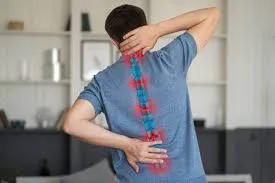Signs of a Herniated Disc

A herniated disc occurs when the soft inner substance of a spinal disc pushes through its tougher exterior layer. Depending on the location of the herniation and its impact on surrounding nerves, this condition can affect individuals differently. Understanding the signs of this injury can help identify potential symptoms early. The sections below outline common indicators associated with this condition.
Symptoms of a Herniated Disc
The symptoms of a herniated disc can vary based on factors such as which part of the spinal column is affected. While some individuals may experience noticeable discomfort, others may have minimal or no symptoms. Commonly reported signs include back pain, radiating discomfort in other areas of the body, and changes in sensation or strength.
Many symptoms are due to the disc pressing on nearby nerve roots. These signs often appear in the lower back or neck, as these areas of the spine are more susceptible to herniation. Recognizing the symptoms can allow individuals to take appropriate next steps.
Radiating Pain
A herniated disc is often associated with pain that radiates from the spine into other parts of the body. An example would be if the herniation occurs in the lower back, pain may extend through the buttocks and down one leg. This is commonly referred to as sciatica. If the affected disc is in the neck, the pain might radiate into the shoulders and arms. The severity of this discomfort can range from mild to sharp and may worsen with specific movements, such as bending or lifting.
Numbness and Tingling
Individuals with a herniated disc often describe numbness and tingling sensations. These sensations typically occur in the areas served by the affected nerves. For instance, a herniation in the lumbar spine may cause leg or foot tingling. While these sensations may come and go, they can persist or worsen if the condition remains untreated. Recognizing these signs is a step in seeking appropriate care or evaluation.
Muscle Weakness
Muscle weakness is another common sign to be aware of. This weakness typically affects muscles connected to the nerves impacted by the herniated disc. Difficulty lifting the front part of the foot may indicate nerve involvement in the lower back. Weakness can also lead to unsteadiness during physical activity. Individuals experiencing this symptom might notice reduced ability to hold, carry, or grip objects, mainly if the cervical spine is involved.
Mobility Issues
Mobility issues may arise when pain or other symptoms limit an individual’s ability to perform everyday movements. Walking, bending, or stretching can become challenging, mainly if the discomfort is persistent. Individuals may compensate for limited mobility by adjusting postures or avoiding certain activities. Over time, this can affect daily routines or overall fitness levels.
Visit a Spine and Pain Specialist
Signs of a herniated disc often require evaluation from a qualified professional. A spine and pain specialist can provide a comprehensive assessment and recommend steps to manage or treat the condition. Early intervention may help minimize potential complications. If you have noticed any of the symptoms mentioned above, schedule a consultation with a spine health specialist. They can provide tailored advice and guidance on effectively addressing your concerns.





